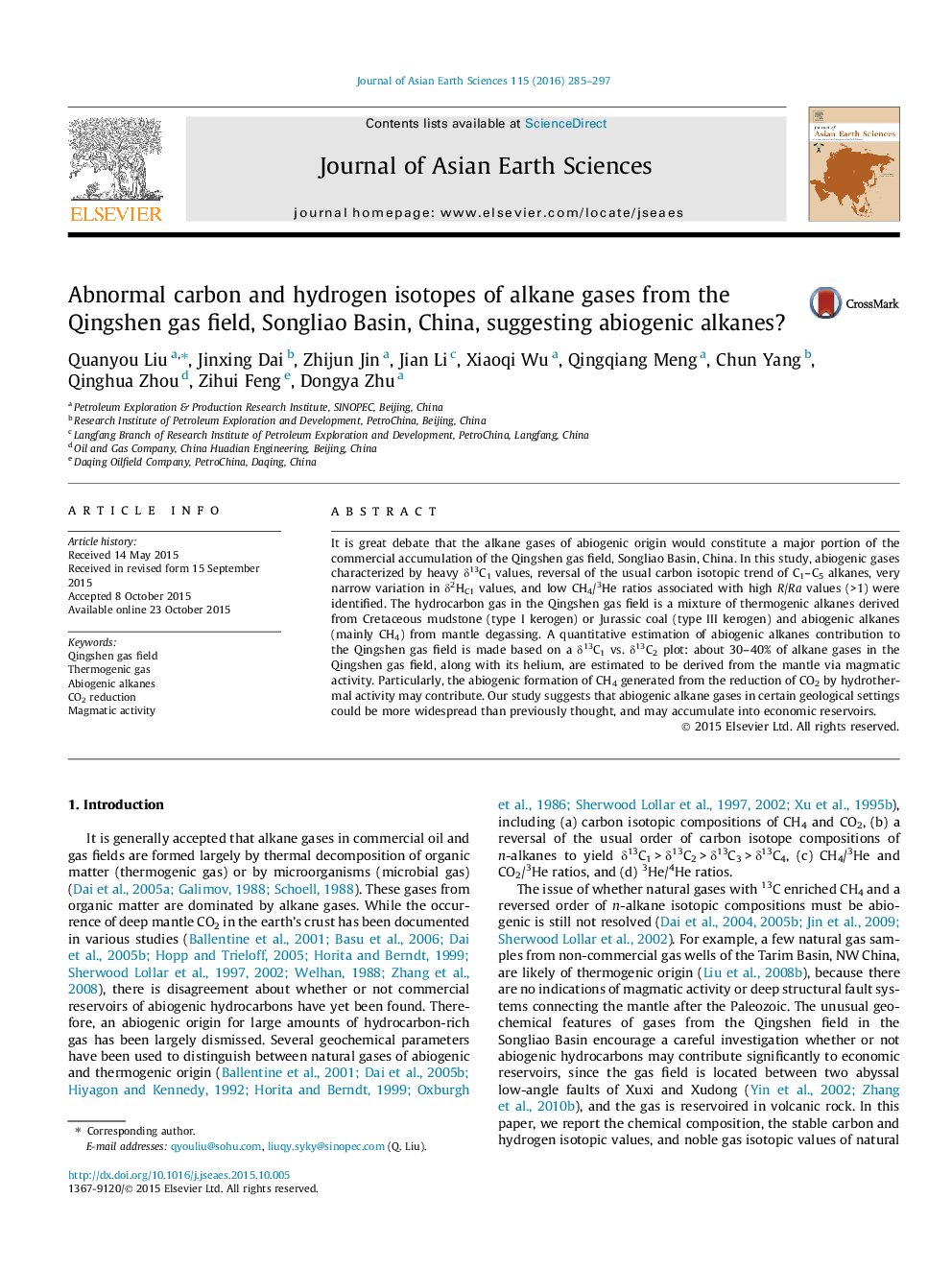| Article ID | Journal | Published Year | Pages | File Type |
|---|---|---|---|---|
| 6443994 | Journal of Asian Earth Sciences | 2016 | 13 Pages |
Abstract
It is great debate that the alkane gases of abiogenic origin would constitute a major portion of the commercial accumulation of the Qingshen gas field, Songliao Basin, China. In this study, abiogenic gases characterized by heavy δ13C1 values, reversal of the usual carbon isotopic trend of C1-C5 alkanes, very narrow variation in δ2HC1 values, and low CH4/3He ratios associated with high R/Ra values (>1) were identified. The hydrocarbon gas in the Qingshen gas field is a mixture of thermogenic alkanes derived from Cretaceous mudstone (type I kerogen) or Jurassic coal (type III kerogen) and abiogenic alkanes (mainly CH4) from mantle degassing. A quantitative estimation of abiogenic alkanes contribution to the Qingshen gas field is made based on a δ13C1 vs. δ13C2 plot: about 30-40% of alkane gases in the Qingshen gas field, along with its helium, are estimated to be derived from the mantle via magmatic activity. Particularly, the abiogenic formation of CH4 generated from the reduction of CO2 by hydrothermal activity may contribute. Our study suggests that abiogenic alkane gases in certain geological settings could be more widespread than previously thought, and may accumulate into economic reservoirs.
Related Topics
Physical Sciences and Engineering
Earth and Planetary Sciences
Geology
Authors
Quanyou Liu, Jinxing Dai, Zhijun Jin, Jian Li, Xiaoqi Wu, Qingqiang Meng, Chun Yang, Qinghua Zhou, Zihui Feng, Dongya Zhu,
